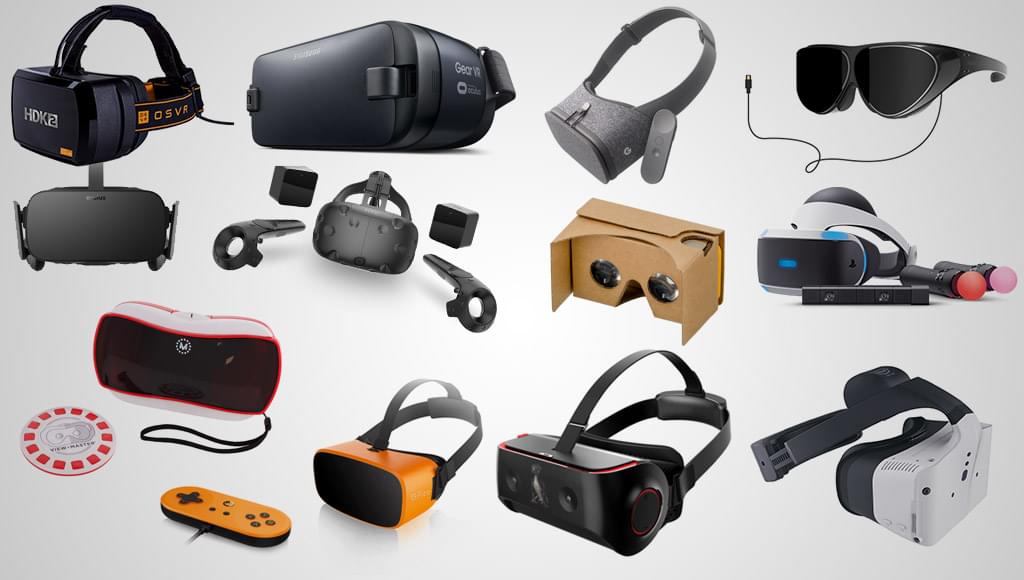Virtual Reality (VR) technology has come a long way in recent years, offering increasingly immersive and captivating experiences. Whether you’re a gaming enthusiast, a tech aficionado, or simply curious about the world of VR, choosing the right headset can make all the difference. In this comprehensive guide, we’ll break down the top five VR headsets of 2024, examining their features, performance, and overall value to help you make an informed decision.
Introduction to VR Headsets
Virtual Reality headsets have transformed the way we interact with digital content, offering immersive experiences that transport users to new worlds. From gaming and entertainment to education and professional applications, VR technology continues to expand its reach and capabilities. In this article, we’ll explore the top five VR headsets of 2024, each offering unique features and advantages for different user needs.

5. Valve Index: High-End PC VR
The Valve Index, while not the newest on our list, remains a formidable contender in the high-end PC VR market. Known for its exceptional visual experience and precise tracking, the Index continues to impress VR enthusiasts and professionals alike.
Key Features:
- High-resolution display with a wide field of view
- Advanced tracking system for precise movements
- Ergonomic design with adjustable fit
- Intuitive controllers with impressive haptic feedback
- High-quality off-ear speakers for spatial audio
- Multiple refresh rate options (up to 144Hz)
Pros:
- Exceptional visual clarity and smooth motion
- Precise and responsive tracking
- Comfortable for extended use
- Impressive audio quality
Cons:
- Requires a powerful PC for optimal performance
- Higher price point compared to some competitors
The Valve Index shines in its ability to deliver a premium VR experience, particularly for those who prioritize visual quality and precise tracking. Its high refresh rate options contribute significantly to reducing motion sickness, making it an excellent choice for users who are sensitive to this issue.
For gamers and VR enthusiasts with powerful PCs, the Valve Index offers an unparalleled experience in titles like “Half-Life: Alyx” and “Beat Saber.” The headset’s wide field of view and high refresh rate create a sense of presence that’s hard to match.
4. PlayStation VR2: Next-Gen Console VR
The PlayStation VR2 represents a significant leap forward for console-based virtual reality. Designed exclusively for the PlayStation 5, this headset brings next-generation features to Sony’s gaming ecosystem.
Key Features:
- OLED display with 2000 x 2040 resolution per eye
- Smooth 120 Hz refresh rate
- Advanced eye-tracking technology
- Haptic feedback in controllers and headset
- 3D audio for immersive soundscapes
- Simple setup process
Pros:
- Impressive visual quality
- Innovative eye-tracking features
- Comfortable design for long gaming sessions
- Seamless integration with PlayStation 5
Cons:
- Limited to PlayStation 5 owners
- Smaller game library compared to PC VR platforms
The PlayStation VR2 excels in providing a high-quality VR experience within the console gaming space. Its eye-tracking technology not only enhances immersion but also enables new gameplay mechanics, setting it apart from its predecessor and many competitors.
Games like “Horizon Call of the Mountain” and “Resident Evil Village VR” showcase the headset’s capabilities, demonstrating how VR can elevate traditional gaming experiences to new heights.
[Link: “Best PlayStation VR2 Games of 2024”]
3. Meta Quest 2: Versatile Standalone VR
The Meta Quest 2 (formerly known as Oculus Quest 2) has become a household name in the VR industry, thanks to its balance of performance, affordability, and versatility.
Key Features:
- Standalone design (no PC required)
- High-resolution display
- Intuitive touch controllers
- Lightweight and comfortable design
- Option for PC VR via Oculus Link
- Extensive library of games and applications
Pros:
- No need for external sensors or a powerful PC
- Affordable entry point into high-quality VR
- Versatile use cases (standalone and PC VR)
- Large and growing content library
Cons:
- Battery life could be improved
- Less powerful than high-end PC VR setups
The Meta Quest 2’s standalone nature makes it an excellent choice for those new to VR or users who prioritize convenience. Its ability to function both as a standalone device and as a PC VR headset (when connected to a compatible computer) offers flexibility that many users appreciate.
Popular titles like “Beat Saber,” “Population: One,” and “Supernatural” showcase the Quest 2’s capabilities, offering engaging experiences without the need for additional hardware.
[Link: “Getting Started with Meta Quest 2: A Beginner’s Guide”]
2. Meta Quest 3: Advanced Standalone and Mixed Reality
Building on the success of its predecessor, the Meta Quest 3 takes standalone VR to new heights while introducing impressive mixed reality capabilities.
Key Features:
- Powerful Snapdragon XR2 Gen 2 processor
- 4K+ Infinite Display with higher resolution
- Full-color passthrough for mixed reality experiences
- Redesigned, slimmer form factor
- Enhanced Touch Plus controllers
- Compatibility with Quest 2 library
Pros:
- Significant performance boost over Quest 2
- Impressive mixed reality capabilities
- Improved comfort and weight distribution
- Backwards compatibility with extensive content library
Cons:
- Higher price point than Quest 2
- Battery life still limited for extended sessions
The Meta Quest 3 represents a major leap forward in standalone VR technology. Its improved processing power and display quality deliver more immersive experiences, while the full-color passthrough opens up new possibilities for mixed reality applications.
The Quest 3 excels in both gaming and productivity applications. Titles optimized for its hardware, like “Assassin’s Creed Nexus VR” and “Stranger Things VR,” demonstrate the headset’s enhanced capabilities.
[Link: “Exploring Mixed Reality: Top Applications for Meta Quest 3”]
1. Apple Vision Pro: Revolutionary Mixed Reality
The Apple Vision Pro stands at the forefront of mixed reality technology, offering a glimpse into the future of computing and digital interaction.
Key Features:
- Micro OLED display with 23 million pixels
- Dual-chip setup (M2 and R1) for powerful performance
- Precise eye and hand tracking for intuitive control
- Spatial audio with dynamic head tracking
- Seamless integration with Apple ecosystem
- Advanced mixed reality capabilities
Pros:
- Stunning visual clarity and color reproduction
- Innovative control methods (eye tracking and gestures)
- Powerful performance for smooth experiences
- Potential to revolutionize work and entertainment
Cons:
- High price point
- Limited battery life for a standalone device
The Apple Vision Pro represents a paradigm shift in how we interact with digital content. Its exceptional display quality, coupled with intuitive control methods, creates an unparalleled mixed reality experience.
While gaming is certainly possible on the Vision Pro, its strengths lie in productivity, creative work, and entertainment consumption. Applications like immersive FaceTime calls, 3D modeling, and virtual workspaces showcase the device’s potential to transform various industries.
[Link: “Apple Vision Pro: Transforming Industries Through Mixed Reality”]
Comparison Table
| Feature | Valve Index | PlayStation VR2 | Meta Quest 2 | Meta Quest 3 | Apple Vision Pro |
|---|---|---|---|---|---|
| Display Type | LCD | OLED | LCD | LCD | Micro OLED |
| Resolution (per eye) | 1440×1600 | 2000×2040 | 1832×1920 | 2064×2208 | Custom (23M pixels total) |
| Refresh Rate | Up to 144 Hz | 120 Hz | 90 Hz | 90 Hz | Not specified |
| Field of View | ~130° | ~110° | ~90° | ~110° | Not specified |
| Tracking | External | Inside-out | Inside-out | Inside-out | Inside-out |
| Controllers | Valve Index Controllers | PS VR2 Sense | Touch Controllers | Touch Plus Controllers | Hand/Eye Tracking |
| Standalone | No | No | Yes | Yes | Yes |
| PC Compatible | Yes | No | Optional | Optional | No |
| Price Range | High | Medium | Low | Medium | Very High |
Factors to Consider When Choosing a VR Headset
When selecting a VR headset, consider the following factors:
- Intended Use: Are you primarily interested in gaming, productivity, or a mix of both?
- Platform Compatibility: Do you need a headset that works with a specific console or PC?
- Space Requirements: Do you have room for external sensors, or do you need a standalone solution?
- Budget: VR headsets range from affordable to premium price points.
- Performance Needs: Consider the resolution, refresh rate, and processing power required for your desired experiences.
- Comfort: Look for adjustable straps, weight distribution, and ventilation for extended use.
- Content Library: Check the available games and applications for each platform.
The Future of VR Technology
As VR technology continues to evolve, we can expect to see advancements in several key areas:
- Higher Resolution Displays: Even more lifelike visuals with reduced screen-door effect.
- Improved Haptics: More realistic touch and force feedback in controllers and bodysuits.
- Wireless High-Fidelity: Advancements in wireless technology for PC VR without compromises.
- AI Integration: Smarter, more responsive virtual environments and characters.
- Extended Reality (XR): Seamless blending of VR, AR, and real-world environments.
- Brain-Computer Interfaces: Direct neural interfaces for more intuitive control and immersion.
Conclusion
The world of VR headsets in 2024 offers something for everyone, from high-end enthusiasts to casual users. While the Apple Vision Pro leads the pack with its revolutionary approach to mixed reality, each headset on this list has its strengths and ideal use cases.
- The Valve Index remains a top choice for PC VR enthusiasts seeking premium performance.
- PlayStation VR2 brings next-gen VR to console gamers with impressive features.
- Meta Quest 2 continues to offer an accessible and versatile VR experience.
- Meta Quest 3 pushes the boundaries of standalone VR with enhanced performance and mixed reality capabilities.
- Apple Vision Pro sets a new standard for mixed reality, potentially reshaping how we interact with digital content.
As VR technology continues to advance, we can expect even more exciting developments in the coming years. Whether you’re a gamer, creative professional, or tech enthusiast, there’s never been a better time to explore the immersive world of virtual reality.








